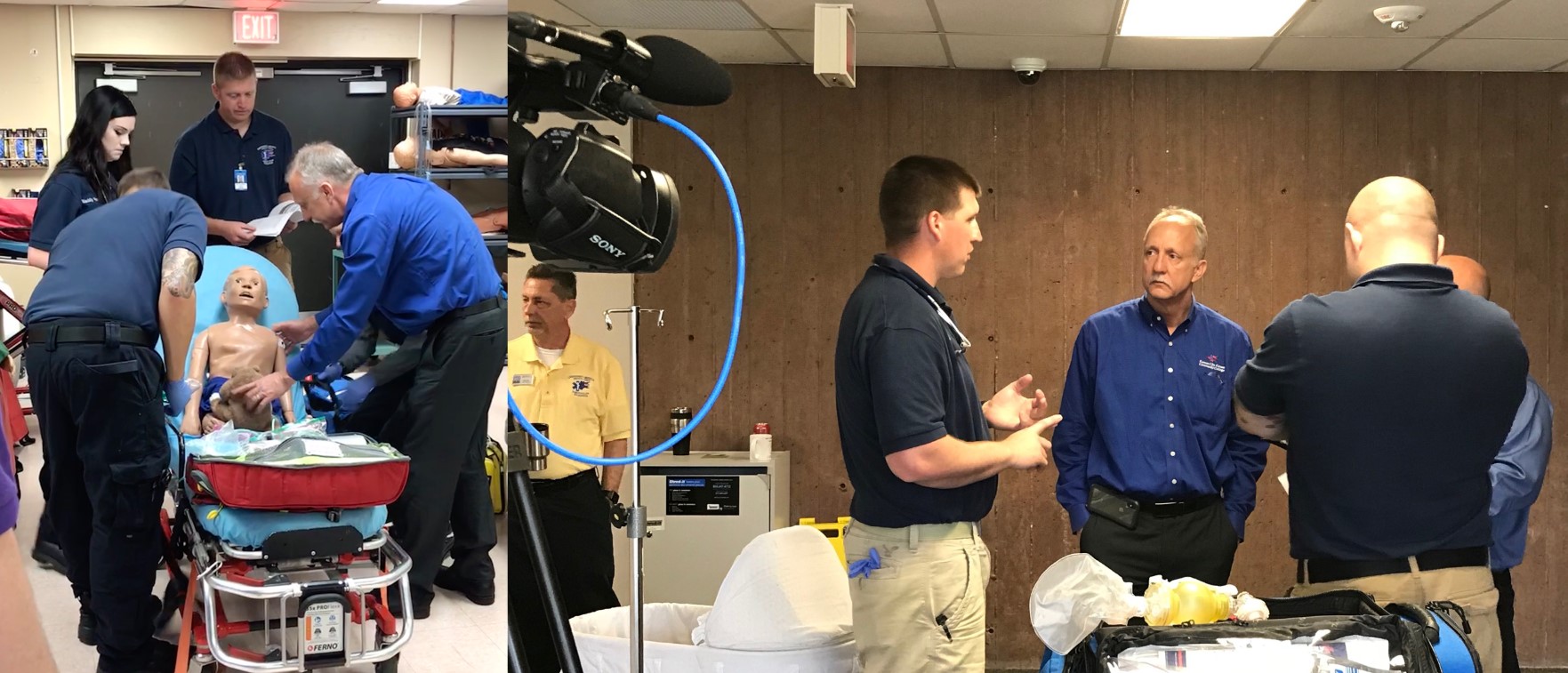Hope all Blue Devils had a safe and fun Fourth of July weekend! If there is one quote that best represents a Kansas City summer, this one would definitely be in the running:
“If summer had one defining scent, it’d definitely be the smell of barbecue.” Katie Lee

A little Fireworks Trivia: Americans spent $360 million on display fireworks and $945 million on consumer fireworks in 2018, and the American Pyrotechnics Association said consumer fireworks revenues could exceed $1 billion in 2019.
As many people who don’t work in higher education believe, summertime is a time of leisure, working on large projects and preparing for the year to come it seems that each summer goes by more quickly . Below represents just a few projects that are taking place at KCKCC this summer.
Project KSTEPUP: Dr. Hira Nair, Academic Deans, Dr. Krueger and others continue to work on the $1.7 Million, 5 year, Project KSTEPUP (Kansas Statewide Teacher Education Pathway for Underserved and Place-bound students) grant to implement reforms to current teacher preparation programs. This is a collaborative grant that spans the state of Kansas and includes: Kansas State Department of Education (KSDE), KSU College of Education (KSUCOE), KSU College of Arts and Sciences (KSUAS), Kansas City Kansas Community College (KCKCC), Seward County Community College (SCCC), USD 500 Kansas City Kansas Public Schools (KCK), and USD 480 Liberal Public Schools.
This summer, grant participants identified KCKCC courses that qualified high school students can take their junior and senior years to graduate with an Associate Degree in Elementary Education while still in high school or take some of the classes while in high school and finish at KCKCC within one year. Individuals from KCKCC also attended kickoff and planning meetings to prepare for the upcoming school year.
KCKCC Emergency Medical Technician and Paramedic Programs: Of course, KCKCC has courses and programs running throughout the fall, spring and summer. In June, I had the opportunity to spend a morning with Jeff Smith, Director EMT/Paramedic Programs, and other program full-time and adjunct faculty as they prepare their students to save lives in the real world! Like our many other healthcare-related programs, the faculty in the EMT/Paramedic programs are teaching skills that if done correctly in the field will literally save lives, so quality instruction is critical.
During the last several years, the program has transitioned more and more to the use of practical and hands-on/applied instruction as this instructional pedagogy engages the students’ full-body muscle memory as well as the brain. Having the opportunity to take part in one of the instructional scenarios provided great insight into the complexity and intricacies required to design such scenarios to make them effective, and the need for multiple instructors to maximize the scenarios to their greatest instructional/learning potential. Great job by all the faculty and I was very impressed with the students’ knowledge and capabilities from each class. To Jeff and all the faculty, thanks for letting me spend the morning with you!

Ambient Learning Projects: Thanks to the great work of Shai Perry, Barbara Clark-Evans and the whole Ambient Learning Committee, art, culture, history and more are being brought together as KCKCC’s Ambient Learning projects continue to make progress across the college. Along with these two murals, plans are in place to create a long mural in the administrative hallway that shows the intertwined history and culture of KCKCC and Wyandotte County as well as murals and artwork to be added to the hallways at the Technical Education Center. Be sure not to miss the grand unveiling, towards the beginning of the fall semester, of the entire Watering Hole space where the Wyandotte Indian mural was just added!

Learning Spaces: While not yet ready for photos, the work being done by Jeff Sixta and our incredible Maintenance and Facilities department and Jelena Ozegovic and the Learning Spaces Committee is really taking shape. Over the summer, the previous six classrooms across the hall from the administrative offices have been gutted and turned into four, with the two outside classrooms at the end of each hallway being opened up and turned into one large classroom. All classrooms are being updated and configured with new furniture and instructional technology to accommodate a more mobile learning style and the use of additional student technology. While the image below is not the final configuration, it shows the two outside classrooms being combined into one and provides an idea of what is being done and different possibilities with new furniture.

Updates to Presidents Extended Cabinet: Beginning this fall PEC will have a slightly different look. Currently comprised of President’s Cabinet and two representatives each from College Senate, Faculty Senate and Staff Senate, beginning this fall a Dean will be added to the team. PEC members will also serve a two-year term so additional leadership and growth opportunities can be developed and nurtured while serving in these positions.
State Level Work: Work at the State level has also been busy. To ensure KCKCC’s voice is heard, I am serving on special task forces to: provide community college feedback on KBOR’s Proposed Strategic Plan and new Institutional Performance Metrics, and identify reporting mechanisms to meet new legislative requirements under HB 2144 (community college transparency act).
KBOR Proposed Strategic Plan and Institutional Performance Metrics. Earlier this summer, KBOR released a draft strategic plan with three pillars – Family, Business and Economic Prosperity. Each pillar has four areas of focus: Affordability, Access, Success and Talent Pipeline. In the identified benchmarks to be used to determine success in each of these areas, the benchmarks focused primarily on four-year university measures or measures that are beyond the control of the community colleges as we are open door institutions. The work of this committee was to provide feedback and recommend solutions that are feasible in the community college sector. As these measures and benchmarks will likely be used as our new institutional performance measures at the conclusion of next year, when KBOR’s current strategic plan “Foresight 2020” ends, it was critical to help provide solutions so community colleges can be measured on items that make sense for the two-year sector.
HB 2144 Implementation. With the passing of HB 2144 community colleges are now required to report in one location on their website items such as: tuition and fees per students’ residence classifications, percentage of students attending from each residence classification, scholarships disbursed from various sources, mill levy information, scholarships disbursed to athletes from different residence classifications and other similar items. Of course, we already post and are very transparent with many of these items and some items are new.
While reporting this information is not a concern, as community colleges are some of the most transparent institutions of higher education in the country, the important work is to develop a system that all community colleges are reporting using the same criteria and that data is reported in the same format. The work of this group is to develop a structure for pulling and tabulating this information, and doing so with the least duplication of work possible and using data that is already submitted at the state level. More to come on this in the coming months…
Many other great things are happening across the College at all of our locations, but that will do it for today.
Hope you have a terrific week and are enjoying this beautiful summertime weather! And leaving you with the great words of Helen Keller, “Keep your face to the sun and you will never see the shadows.”
Dr. M.